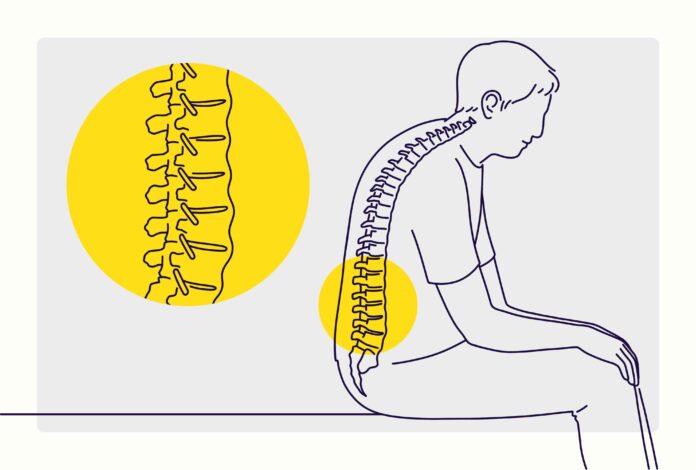Axial spondyloarthritis, another name for ankylosing spondylitis, is an inflammatory condition that can eventually lead to the fusion of some vertebrae, or spine bones. This fusing can cause a hunched posture and reduce the spine’s flexibility. It may be challenging to breathe deeply if the ribs are impacted.
Two types of axial spondyloarthritis exist. The condition known as axial spondyloarthritis, or ankylosing spondylitis, is discovered on an X-ray. Nonradiographic axial spondyloarthritis is the term used to describe a condition that is diagnosed based on symptoms, blood tests, and other imaging tests but is not visible on X-rays.
Usually, symptoms start in early adulthood. Other body parts can also become inflamed; the eyes are the most common example.
Ankylosing spondylitis has no known cure, although certain medications can minimise symptoms and possibly halt the illness’s advancement.
Symptoms
Back pain and stiffness in the lower back and hips, particularly in the morning and after periods of inactivity, are possible early signs of ankylosing spondylitis. Fatigue and neck pain are also common. The symptoms may get worse over time, get better, or stop happening randomly.
- The regions most frequently impacted are:
- The joint where the pelvis and base of the spine meet.
- The vertebrae in the lower back.
- The points on bones, mostly in the spine but also occasionally along the back of the heel, where ligaments and tendons attach to bones.
- The cartilage between the breastbone and the ribs.
- The hip and shoulder joints.
Causes
Although the exact cause of ankylosing spondylitis is unknown, genetic factors appear to be involved. In particular, people who have a gene called HLA-B27 are at a greatly increased risk of developing ankylosing spondylitis. But the condition only manifests in a small percentage of gene carriers.
Treatment
Relieving pain and stiffness as well as preventing or postponing complications and spinal deformity are the main objectives of treatment. Treatment for ankylosing spondylitis is most effective before the condition results in permanent damage.
Drugs
The most common medications used by medical professionals to treat axial spondyloarthritis and nonradiographic axial spondyloarthritis are nonsteroidal anti-inflammatory drugs (NSAIDs), such as naproxen sodium (Aleve) and ibuprofen (Advil, Motrin IB, among others). These medications may reduce stiffness, pain, and inflammation, but they may also result in bleeding in the gastrointestinal tract.
Your doctor may recommend starting an interleukin-17 (IL-17) inhibitor or a tumour necrosis factor (TNF) blocker if nonsteroidal anti-inflammatory drugs (NSAIDs) aren’t working. These medications are administered intravenously or subcutaneously. An inhibitor of Janus kinase (JAK) is an additional choice. Inhibitors of Janus kinase (JAK) are taken orally. Certain medications have the ability to reactivate untreated tuberculosis and increase your susceptibility to infections.
TNF (tumour necrosis factor) inhibitors include, for example:
- Adalimumab (Humira).
- Pegol certolizumab (Cimzia).
- Etanercept (Enbrel).
- Simponi’s Golimumab
- Infliximab (Remicade).
Interleukin-17 (IL-17) inhibitors used to treat ankylosing spondylitis include secukinumab (Cosentyx) and ixekizumab (Taltz). JAK inhibitors such as upadacitinib (Rinvoq) and tofacitinib (Xeljanz) are available to treat ankylosing spondylitis.
Counselling
Physical therapy is a crucial component of care and offers several advantages, such as pain alleviation and enhanced strength and flexibility. For your needs, a physical therapist can create customised exercises. To maintain proper posture, you could be instructed in:
- stretching and range-of-motion exercises.
- exercises to strengthen the back and abdominal muscles.
- proper sleeping and walking positions.
Operation
The majority of patients with nonradiographic axial spondyloarthritis and ankylosing spondylitis do not require surgery. If you are in excruciating pain or if your hip joint is so damaged that it needs to be replaced, surgery might be advised.































